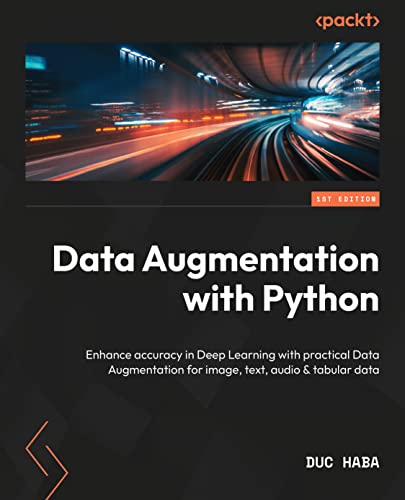

Most ebook files are in PDF format, so you can easily read them using various software such as Foxit Reader or directly on the Google Chrome browser.
Some ebook files are released by publishers in other formats such as .awz, .mobi, .epub, .fb2, etc. You may need to install specific software to read these formats on mobile/PC, such as Calibre.
Please read the tutorial at this link: https://ebookbell.com/faq
We offer FREE conversion to the popular formats you request; however, this may take some time. Therefore, right after payment, please email us, and we will try to provide the service as quickly as possible.
For some exceptional file formats or broken links (if any), please refrain from opening any disputes. Instead, email us first, and we will try to assist within a maximum of 6 hours.
EbookBell Team

4.4
52 reviewsUnlock the power of data augmentation for AI and Generative AI with real-world datasets. Improve your model’s accuracy and extend images, texts, audio, and tabular using 150+ fully functional OO methods and open-source libraries.
Key Features
• Practical Data augmentation techniques for images, texts, audio, and tabular data using real-world datasets
• Beautiful, customized charts and infographics in full color for image, text, audio, and tabular data
• Fully functional object-oriented code using open-source libraries on the Python Notebook for each chapter
Book Description
Data is paramount in an AI project, especially for Deep Learning and Generative AI. The forecasting accuracy relies on robust input datasets. The traditional method of acquiring additional data is difficult, expensive, and impractical. The only option to extend the dataset economically is data augmentation.
You will learn 20+ Geometric, Photometric, and Random erasing augmentation methods using seven real-world datasets for image classification and segmentation. In addition, we will review eight image augmentation open-source libraries, write OOP wrapper functions on the Python Notebooks, view color image augmentation effects, analyze the safe level and biases, and extend the chapter with Fun facts and Fun challenges.
You will discover 22+ character and word techniques for text augmentation using two real-world datasets and excerpts from four classic books. The advanced text augmentation chapter uses Machine Learning to extend the text dataset, such as Transformer, Word2vec, BERT, GPT-2, and others.
Similarly, the audio and tabular data chapters have real-world data, open-source libraries, amazing custom plots, Python Notebook, Fun facts, and Fun challenges.
By the end of the book, you will be proficient in image, text, audio, and tabular data augmentation techniques.
What you will learn
• Write OOP Python code for image, text, audio, and tabular data
• Access over 150,000 real-world dataset from